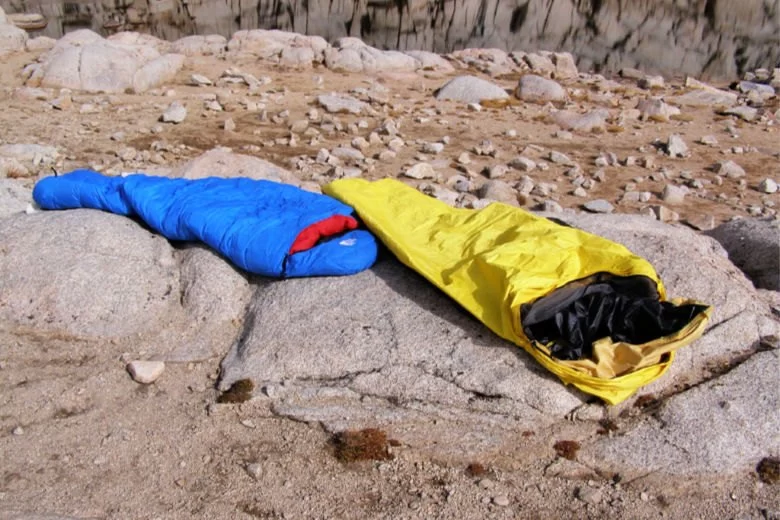- 1. Types of Sleeping Bags
- 2. Insulation Types Explained
- 3. Understanding Temperature Ratings
- 4. Choosing the Best Sleeping Bag for You
- 5. Real-Life Case Study: Choosing the Right Sleeping Bag
1. Types of Sleeping Bags
When it comes to choosing the right sleeping bag, understanding the different types is essential. Sleeping bags come in a variety of shapes, sizes, and designs, each suited to different needs. The three most common types are:
1.1 Mummy Sleeping Bags
Mummy sleeping bags are designed to fit snugly around the body, offering maximum warmth and insulation. Their tapered shape minimizes space inside the bag, trapping heat more effectively. Ideal for cold-weather camping or hiking, these bags are often lightweight and compact.
1.2 Rectangular Sleeping Bags
Rectangular sleeping bags provide ample room to move around, making them a good choice for those who prefer more space. They’re often used for camping trips where warmth isn’t as much of a concern. These bags are versatile but tend to be bulkier than mummy bags.
1.3 Semi-Rectangular Sleeping Bags
For those who want a mix between the warmth of a mummy bag and the space of a rectangular bag, semi-rectangular sleeping bags offer the perfect compromise. They offer extra room at the shoulders and legs while maintaining a more compact design compared to rectangular sleeping bags.
2. Insulation Types Explained
Another crucial factor in choosing the right sleeping bag is the type of insulation it uses. Sleeping bags are generally insulated with either synthetic materials or down feathers, each with its own benefits.
2.1 Down Insulation
Down insulation is highly regarded for its superior warmth-to-weight ratio. It’s ideal for cold conditions because it traps heat efficiently. However, it loses its insulating properties when wet, which can be a drawback in wet environments.
2.2 Synthetic Insulation
Synthetic insulation, made from polyester fibers, performs well even when wet, making it a better choice for humid or rainy conditions. While not as lightweight or compact as down, it offers durability and insulation in most weather conditions.
3. Understanding Temperature Ratings
Temperature ratings are one of the most important factors in choosing a sleeping bag. These ratings indicate the lowest temperature at which the sleeping bag will keep you warm. It's important to remember that these are guidelines; individual comfort levels may vary.
3.1 Comfort Rating
The comfort rating is the temperature at which a person will be comfortable inside the sleeping bag. This rating typically applies to a woman’s sleeping bag, as women tend to feel the cold more than men.
3.2 Lower Limit Rating
The lower limit rating is the lowest temperature at which a sleeping bag will keep a person warm. This is often the most critical rating for those planning cold-weather camping trips.
3.3 Extreme Rating
The extreme rating indicates the temperature at which a sleeping bag will keep you alive, but not necessarily comfortable. It’s important to note that this is a survival rating, not one you should aim for on a regular camping trip.
4. Choosing the Best Sleeping Bag for You
When selecting a sleeping bag, several factors should be considered:
4.1 Fit and Size
Choosing the right size ensures that your sleeping bag fits your body comfortably, helping you stay warmer. For taller individuals, a longer sleeping bag may be necessary. Always check the dimensions before buying.
4.2 Weight and Packability
If you're planning a hiking trip or need to carry your bag for long distances, consider a lightweight sleeping bag that packs down small. Mummy bags and down-insulated options are often the best for minimizing weight.
4.3 Durability and Materials
Investing in a high-quality sleeping bag made from durable materials can ensure that it lasts for many years. Look for sleeping bags with robust zippers, reinforced stitching, and high-quality insulation.
5. Real-Life Case Study: Choosing the Right Sleeping Bag
Consider the story of Sarah, an avid camper who often hikes in the mountains. On one of her trips, she found herself caught in unexpected rain, and her down sleeping bag lost its insulating properties. This led her to switch to a synthetic-insulated bag, which performed better in damp conditions. Her experience highlights the importance of choosing the right type of insulation based on weather conditions.
For those in similar situations, a place like Pine Cliff Resort offers a range of sleeping bags suitable for different climates and activities. They can help you find the best option for your next adventure.







